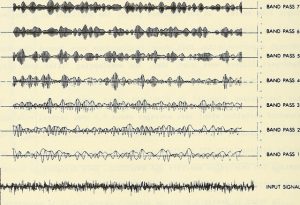
Image Source: Flickr user Internet Archive Book Images.
You’re in the thick of it—sitting in a small, quiet interview room, examining a suspect in a tough case. Every question is answered with incredible ease, but you worry there is something beneath the surface you aren’t quite able to reach. Are you being deceived? After an hour of questioning and an inconclusive polygraph, you’re starting to feel the pressure of time. Should you pursue further questioning based on a hunch?
Decision-making in law enforcement is not an easy feat—especially when it comes to evaluating a subject’s truthfulness on a deadline. Technology’s aim is to assist in this regard, but unreliable systems won’t actually help us reach well-informed decisions in reasonable amounts of time. The polygraph, for instance, takes two to four hours from setup to completion (compared to less than half that time for the CVSA)—only to yield inconclusive results in far too many cases.
That is why the CVSA and its FACT Scoring Algorithm have proven so useful for law enforcement. This truth verification technology helps you avoid these pitfalls by offering an easily interpretable and quantifiable result called a “block score.” The block score correlates with the level of stress in a person’s voice and helps law enforcement officials quickly rule out or identify suspects in difficult criminal cases.
What is a Block Score?
Stress-related changes in voice patterns are undetectable by the unassisted human ear, so the CVSA addresses this challenge using the FACT Scoring Algorithm. When the CVSA captures voices—whether in-person, via a recording, or over the phone or internet—the FACT Scoring Algorithm generates 2-D sound waves on a digital graph. These sound waves illustrate that person’s unique and stress-related vocal characteristics and patterns.
The attributes of these distinct sound waves—such as wave amplitude and slope—are then analyzed and compared to compute a final block score. Specifically, the block score is an integer that correlates with levels of psychophysiological stress in test subjects’ voices, which helps examiners identify potential patterns of deception in subjects.
Block Score Categories
CVSA exam results are fairly simple: the higher the block score, the greater the probability of deception in the human subject. Greater stress levels and higher block scores indicate that the interviewee is more likely to be presenting false information. Conversely, a lower block score means that less voice stress is present and the subject is more likely to be telling the truth.
Block scores are categorized into one of four groups:
- A “hard block” score indicates extreme stress and thus a high likelihood of deception.
- A “medium block” score indicates deception is probable.
- A “tendency to block” score indicates the possibility of deception.
- A diagonal pattern is the equivalent of “no blocking” and indicates truthfulness.
The Benefit for Law Enforcement
Those involved with conducting criminal investigations are well aware of the diligence needed to accurately cross-examine and identify suspects in the least amount of time possible. The CVSA and its FACT Scoring Algorithm provide this added level of efficiency and streamline the police interview process.
Consistent, accurate, time-saving, and user-friendly technologies are hard to come by in today’s information age. The CVSA, however, has consistently proven its ability to identify potential deception in the shortest amount of time possible and with the least amount of technical difficulty or confusion. Those who work in law enforcement are called upon to make many difficult decisions, and while no technology can replace the expertise of a skilled interviewer, the CVSA can assist these officials in doing their jobs as efficiently as possible.
Reach out to us at NITV Federal Services to learn more about our CVSA systems and training programs.
